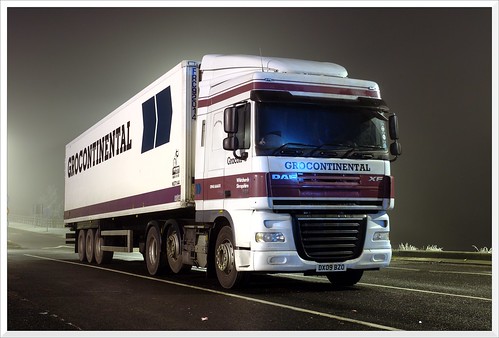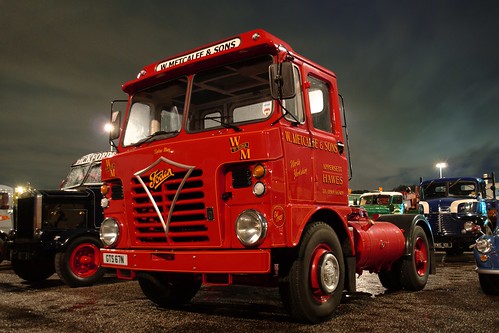

 |

|
| Welcome to the Truck & Bus Forums | |
| A very warm welcome to truckandbusforum.com, a completely FREE online community for people worldwide with an interest in vintage and modern trucks and buses. Click here to go to the forums home page and find out more. Please feel free to join by clicking HERE. |
|
|
|||||||
 |
|
|
Thread Tools |
|
#1
|
|||
|
|||
|
JPEG or RAW
Having just acquired a (secondhand) camera which has the ability to shoot RAW I need some advice.
At present I shoot only in JPEG and I have found that any sort of editing (even in Windows Photo Gallery to slightly adjust the exposure) reduces the size of the image (in KB if not in area). I presume this is due to the JPEG format? Whilst the camera is 10Mp, the images saved on the SD card vary between 3600KB and 4400KB. Is this correct? What size would a RAW image be? I believe that the camera has the facility to save RAW and JPEG (there is also mention of compressed RAW format (PEF) and non-compressed RAW (DEG)). At present I am 'short' of SD card capacity (256MB) so I don't want to fill this up un-necessarily. What would others advise? I'm not expecting exhibition quality, but I would like to use the capability of the camera when, perhaps, I want to enlarge a subject (I tried shooting high-flying airliners with vapour trails using a 300mm (450) lens but the image, whilst in-focus soon gets pixelated when I zoom-in). |
|
#3
|
||||
|
||||
|
Sorry G-C I can't help . . . . .but I know a Man who can at www.worldphotographyforum.com I feel sure there will be a sticky on that subject
__________________
I don't suffer from Insanity I ENJOY every Minute of it  : :
|
|
#5
|
||||
|
||||
|
The RAW will take up a lot more memory in it's uncompressed format compared with JPEG. For 10Mp camera expect 12Mb - 15Mb per frame. It's worth investing in at least 8GB or 16GB cards as they're not that expensive now. 32GB is best value per GB in Asia at the moment and I'm sure that will be the case in a few weeks time in UK also if not so already.
If you edit in RAW your file will not degrade on each manipulation as JPEG does. My theory is to always shoot on the best settings you possible can - to heck with the amount of memory needed. Even if you are not that bothered about editing now you might be in the future and you can never re-take that picture! |
|
#6
|
||||
|
||||
|
Quote:
The RAW file is best thought of as a negative that needs a fair bit of processing to get it into a state worth using. The RAW file is actually just the data that the camera records at the time of shooting - in jpg mode the camera then processes this and makes decisions about white balance and sharpness etc When you edit a RAW file you save a TIFF or jpg from it - you do not alter the RAW file itself (therefore like a neg.) Some DSLRs produce very good jpgs in all conditions - some only in certain conditions - such as bright sunlight. After a while you get used to the bias of the standard settings on your camera in jpg - for instance - my D200 produced slightly "cool" images with a faint blue tinge under certain conditions. Shooting RAW allows me to change the white balance on my pc. Both these images below were shot under nasty orange sodium lights - rather than mucking about with bit sof card to set the white balance in the field - I did it all later:   You can also recover far more data from over-exposed areas from a RAW file than you can with a jpg. Or you can obviously recover detail lost in shadows more easily. Sounds good? Problems with RAW - each manufacturer uses a different RAW format - Nikon, for instance uses NEF files - some readers won't read them! A lot of the time the jpg will produce an image that can be difficult (without lots of practise) to replicate from a RAW file. As the poster above said though (and as you have seen) jpg is a "lossy" format - everytime you save a jpg, you lose a little bit of quality. If you produce an image from a RAW file and then save it as a TIFF ( a non lossy format) then you can edit away in Photoshop etc and then save into jpg to print or put on the web. I would use uncompressed JPG - best quality. And don't buy the biggest memory card that you can find - buy several smaller ones - therefore if a card dies, you lose less images - i.e. several 4GB cards - (cheap cards on 7dayshop btw) Sorry to ramble on.... Post up your airliner shot and let's see what we can do? |
|
#8
|
||||
|
||||
|
No probs.
The problem that you mention will not be affected by you shooting RAW - Are you shooting the airliner and then massively cropping the file? You'll need a really tasty lens to be able to yield good results that way - the camera makes little difference.
__________________
www.flickr.com/people/fryske |
|
#9
|
|||
|
|||
|
The lens in question is a Sigma APO 75-300mm f4.5/5.6 (manual focus).
The image of the aircraft is a tiny speck but I thought maybe with the camera being 10.2 MP I thought I might get something worthwhile from the image that might identify the aircraft type (I don't expect to read the registration!  ). ).
|
|
#10
|
||||
|
||||
|
Quote:
viewing any image at 100% reveals imperfections - what was the shutter speed?
__________________
www.flickr.com/people/fryske |
 |
| Bookmarks |
| Currently Active Users Viewing This Thread: 1 (0 members and 1 guests) | |
|
|